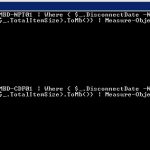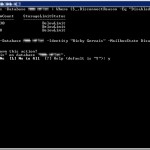
Use PowerShell to determine the total size of disconnected mailboxes in a mailbox database
I have been performing some housekeeping tasks which include removing old user mailboxes. While doing this I was curious how much disk space I would be saving so I took a few minutes to leverage the Get-MailboxStatistics cmdlet and…
Calendar requests sent to resource mailbox have no content
I have been trying to work out why calendar invitations sent to room mailboxes have the content stripped out. I now understand that this is applied to all resource mailboxes by default. I have changed this by using the Set-CalendarProcessing…
Change a mailbox type using PowerShell
Today I needed to convert an existing user mailbox into a room mailbox. I was able to do this quite easily using the Set-Mailbox cmdlet. Here is an example of how to do this: Set-Mailbox -Identity “boardroom” -Type Room Note:…

Delete a disconnected mailbox
Today I needed to remove a mailbox that has been disconnected, but this option isn’t available from the Exchange Management Console so I turned to PowerShell. First, I used the Get-MailboxStatistics cmdlet to generate a list of disabled mailboxes: Get-MailboxStatistics…

Preparing a Windows 2012R2 domain for Exchange 2013
Today I am preparing a Windows 2012 R2 Active Directory domain for Exchange 2013. The process is pretty much the same as Exchange 2010: Extend the schema Populate Active Directory Prepare domain(s) The whole process only takes a few steps……